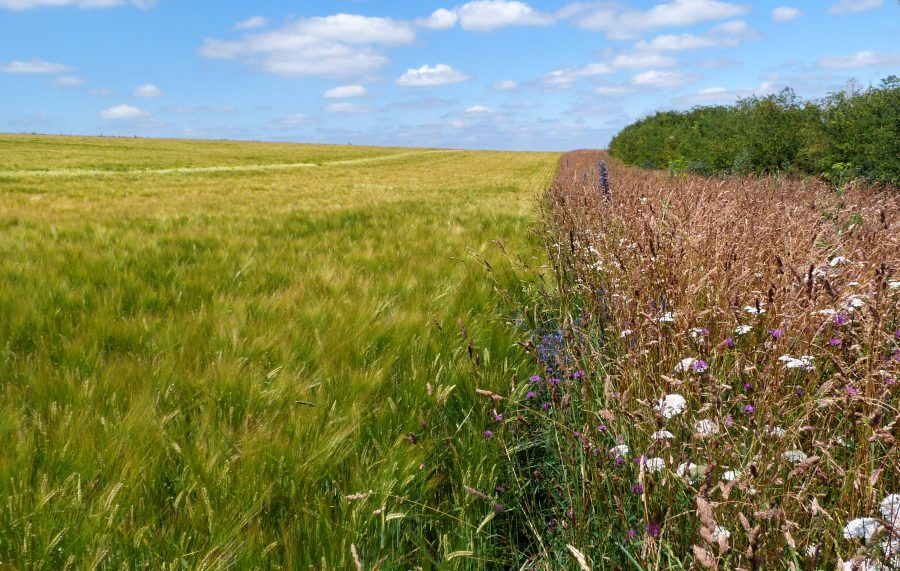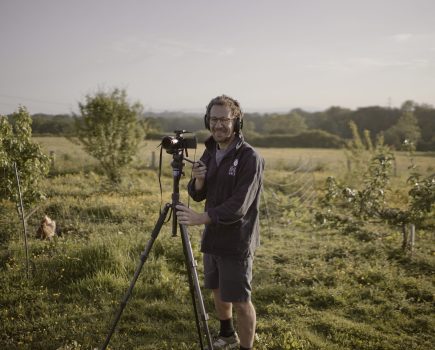Nature-friendly farming boosts biodiversity and yields but may require new subsidies.
A four-year, peer-reviewed study into nature-friendly farming has found that while it improves both biodiversity and crop yields, it is likely to need increased government subsidies if it is to become as profitable as conventional intensive agriculture.
The study, based on comprehensive on-farm trials and led by the UK Centre for Ecology & Hydrology (UKCEH) and Rothamsted Research, not only trialled various agroecological methods but also, for the first time, looked at the financial viability for businesses.
The study was based on trial results from 17 conventional, commercial farms in southern England, including holdings in Oxfordshire, Berkshire, Buckinghamshire and West Sussex.
It showed that incorporating nature-friendly practices within farming increased biodiversity, pollination by bees, natural pest control and numbers of earthworms.
While the approach boosted crop yield, the study found that the cost of creating the habitats and the loss of productive land needed for them affected the profitability, prompting the authors to suggest that new subsidies may be required to help farms transition to sustainable agriculture.
Scientists at UKCEH and Rothamsted worked with farmers to co-develop the trials using simple management practices within three different agricultural systems:
- Business-as-usual – typical intensive agriculture and no nature-friendly farming.
- An ’enhanced ecological farming system’ with wildflower field margins to provide habitat for bees, beetles and spiders, and overwinter cover crops to capture carbon and retain nutrients in the soil.
- A ‘maximised ecological system’ which also included in-field strips of wildflowers to provide ‘runways’ for beneficial insects to get further into crops, and the addition of organic matter in the form of farmyard manure to improve soil health.
The study found that the enhanced and maximised ecological systems showed increased populations of earthworms, pollinators such as bees and hoverflies, and natural crop pest predators such as ladybirds, lacewings and spiders. This reduced populations of aphids and snails and increased the seed numbers and yield of flowering crops like oilseed rape.
There was also higher soil carbon and overall increased crop yields on the farmed area due to healthier soils, greater pollination and natural pest control. The study found the enhanced ecological system was as profitable as intensive farming, but only due to agri-environmental subsidies.
While the benefits for biodiversity, soil carbon and yield were greater in the maximised ecological system, the study found that the average farm would require increased subsidies to make it as profitable as intensive farming, though certain factors, such as free access to manure on a mixed farm, could offset the extra cost.
UKCEH ecologist Dr Ben Woodcock, who led the study, published in the Journal of Applied Ecology, explained: “Without the introduction of new financial incentives, many farmers will be deterred from adopting agroecological farming practices and systems. This could leave them locked into high input, intensive farming systems and more exposed to the impacts of pesticide resistance, declining soil health and climate change.
“While farmers run businesses that need to be profitable, there is an increasing awareness that more sustainable systems can help ‘future-proof’ their farms in terms of soil health and less reliance on pesticides and climate change.
“Agroecological methods are good for biodiversity, food security and, in the long-term, provide more secure farm incomes, but habitats can take several years to establish, so agri-environment subsidies are essential to help farmers transition to these more sustainable systems.”
Professor Jonathan Storkey, an ecologist at Rothamsted Research, said: “This study confirmed that managing land on farms for wildlife is not in direct conflict with food security but can support sustainable production by increasing yields and reducing pest pressure. These ‘ecosystem services’ could potentially substitute for chemical fertilisers and pesticides which negatively impact the environment.
“However, our analysis has shown that realising these benefits will require additional support for farm businesses that currently operate on very narrow profit margins. As input costs increase, however, these agroecological approaches may become more attractive.”

Enhancing ecosystem services with wildflower field margins







